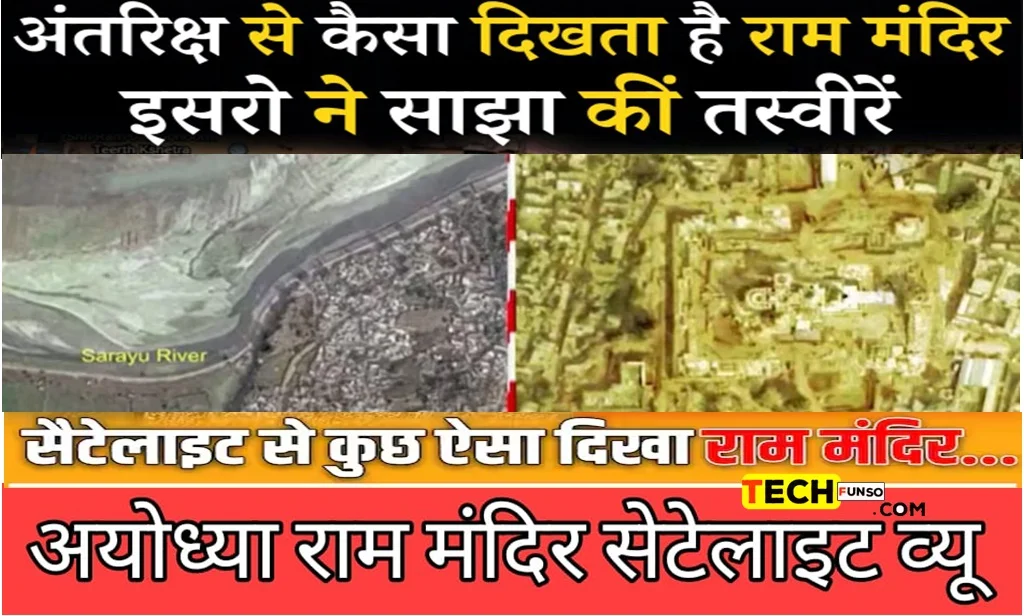Ayodhya Ram Mandir Satellite View अंतरिक्ष से देखने पर कैसा दिखता है अयोध्या का राम मंदिर?
Table of Contents
Ayodhya Ram Temple Satellite View: Ayodhya is gearing up for the grand abhishekam of Ramlala at the temple on Monday. It is expected that thousands of guests including many VIPs and Prime Minister Narendra Modi will attend the Pran Pratistha ceremony. If you are planning to pray and witness the rituals and worship at the magnificent Ram Temple in Ayodhya, you can find the time here.
The Ram temple site spread over an area of 2.7 acres can be seen and detailed imagery of the area is also available with the help of India's array of remote sensing satellites. The under-construction temple was occupied less than a month ago on December 16 last year. Since then, thick fog has enveloped Ayodhya, making visibility difficult.
Ayodhya Ram Mandir Satellite View: ISRO's Hyderabad-based National Remote Sensing Center on Sunday released a satellite image of the newly constructed Ram Mandir in Ayodhya. Taken from an Indian remote sensing satellite, this image shared by ISRO shows the new temple that was inaugurated. 22nd January.
Ayodhya Ram Temple Satellite View
The satellite image of Ram Mandir was captured by Cartosat which has been processed by ISRO's National Remote Sensing Center (NRSC). Cartosat is a remote-sensing satellite capable of providing stereo images in orbit.
Dashrath Mahal and Sarayu rivers are clearly visible in the satellite photo. The recently renovated Ayodhya Railway Station can also be seen.
Ayodhya Ram Temple Satellite View: India currently has more than 50 satellites in space and some of them have a resolution of less than one meter. The images were processed by the National Remote Sensing Center in Hyderabad, which is part of the Indian Space Agency.
ISRO technology was also used in other phases of the construction of the temple. The major challenge of the mega project was to decide the exact location to install Lord Ram's idol. The authority responsible for the construction of the temple wanted the idol to be placed in the 3-foot by 6-foot space where Lord Rama is believed to have been born.
International President of Vishwa Hindu Parishad Alok Sharma is associated with the Ram Mandir project. He told NDTV that after the Babri Masjid was demolished in 1992, Lord Ram is believed to have been born from the 40-foot-high debris. This piece should be removed and the location should be secured so that the new statue is in the same place.
This is easier said than done as the construction of the temple began almost three decades after its destruction. Then space technology came to the rescue.
To determine the exact location, contractors from construction company Larsen & Toubro used state-of-the-art Differential Global Positioning System (GPS) based coordinates. Coordinates accurate to 1 to 3 cm were established. They form the base for placing the idol in the sanctum sanctorum or sanctum sanctorum of the temple.
The precision instruments used in these geospatial instruments also include precise location signals from India's 'Indigenous GPS', and 'India Constellation Navigation' produced by ISRO or NavIC satellite constellation. ISRO chairman S Somnath told NDTV that five satellites of the NAvIC constellation are operational and the system is currently being upgraded.





Post a Comment